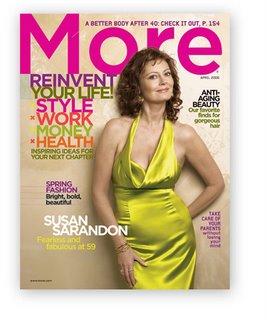's total circulation comes from the Canadian market, so it's not a small deal when Indigo Books and Music pulls all the single copies from its 260 stores , as the
happened this week. Normally the chain handles 3,000 copies a month. It's because of an article called "Drawing Blood" in the June issue.
The issue has been in subscribers' hands, and on the racks, for some time and in the 10-page article cartoonist Art Spiegelman satirically rates all 12 of the controversial so-called "Danish cartoons" with from one to four "fatwa bombs". (Spiegelman also includes, for comparison, several scabrous cartoons from the 19th and 20th centuries.) The cartoons, depicting Islam or the prophet Mohammed, were published as the results of a contest last September in Denmark's
(The Morning Newspaper). It led to protests, some violent, most nasty, around the world since some Muslims say it is blasphemous to depict the prophet.
Spiegelman's article was apparently inspired by a call from an Iranian newspaper in February for a countervailing cartooning contest depicting the Holocaust, to test the limits of press freedom and license in the non-Muslim world.
"In a memo obtained by
The Globe and Mail that was e-mailed to Indigo managers yesterday about “what to do if customers question Indigo's censorship” of
Harper's, employees are told to say that “the decision was made based on the fact that the content about to be published has been known to ignite demonstrations around the world. Indigo [and its subsidiaries] Chapters and Coles will not carry this particular issue of the magazine but will continue to carry other issues of this publication in the future, ” the newspaper said.
(It's not known if this was ordered personally by CEO Heather Reisman, but it seems unlikely such a move would be made without her knowledge and consent. In 2001 Reisman ordered copies of
Mein Kampf by Adolf Hitler off Indigo shelves. )
"Harper's publisher John MacArthur said he was “genuinely shocked” by Indigo's action, in part because two large U.S. chains, Borders and Waldenbooks, are selling the issue," said the Globe story, by James Adams, noting that three months ago, both chains yanked a small U.S. publication, Free Inquiry, when it reproduced four of the Danish cartoons. That Free Inquiry issue with the cartoons is currently on sale at Indigo, the Globe said.
"Mr. MacArthur said
Harper's decided to publish the Spiegelman article because 'we really wanted to expand the conversation' about the role of cartoons and the contours of free expression and not just to say, ‘So there.'”
Interesting that the
Globe article made no reference in its text to the
Western Standard magazine, which is even now fighting a battle in Alberta over its decision to publish several of the cartoons as a matter of principle. A complaint was laid with the province's human rights commission which is conducting an investigation that publisher Ezra Levant has characterized as an outrageous assault on press freedom. This was dealt with in earlier posts, some of which are
here and
here and
here. (For
all the previous posts, do a search using "Western Standard", since most of the pieces in the past year deal with this issue.)









 The fifth annual Canadian Newsstand Awards finalists have been announced. The release and the complete list of nominees can be found
The fifth annual Canadian Newsstand Awards finalists have been announced. The release and the complete list of nominees can be found 


